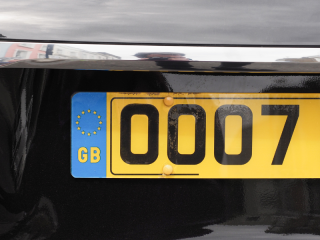
Recently, the UK number plates have changed, and so new cars will now be registered with a 22-plate. But why do the number plates change, and what does it mean for fleet owners? In this update, we have investigated the history of number plates and highlighted any recent changes that you may not be aware of.
New number plates
Since September 2001, new number plates have been released bi-annually for cars on March 1st and September 1st. The number plate is split into three sections. The first set of letters represents where the vehicle was registered, and the first set of numbers represents when the vehicle was registered.
Since this format was introduced, the March number plates have featured the abbreviated year (i.e. XX01), whereas the September number plates have featured the current year plus 50 (i.e. XX51). So, in March 2022, you can expect to see number plates featuring 22, and when September arrives, 72.
It’s not just the number on your plate that will be different either; since September 1st 2021, a new British Standard for Retroreflective Number Plates has been in use. The main difference for the new standard of pines is that they’re more durable. They’re now made from a tougher material and required to pass ten tests, including a newly added abrasion test, which checks to see if the number plate can withstand debris on the road such as salt or dirt.
Recent number plate changes
In the past two years, UK drivers and fleet owners have seen several innovations to the number plates on our vehicles. In December 2020, green number plates were first introduced for all battery vehicles. They were fitted as standard for all zero-emission cars, vans, buses, and motorcycles registered after December 8th. Drivers with these green number plates can also benefit from initiatives such as cheaper parking and free entry to clean air zones.
Shortly after introducing new number plates for zero-emission vehicles, the law around black and silver number plates changed. From January 1st 2021, the DVLA banned all vehicles manufactured on or after January 1st 1980, from displaying traditional black and silver plates. Instead, only the black on white/yellow background number plates that most people are familiar with are allowed.
It’s unlikely that many fleets contain vehicles that are older than ten years. However, if you do own vehicles manufactured before January 1st 1980 or registered with the “historic vehicles” tax class, you can still use the black and silver number plates.
Vehicles fall into the historic tax class once they reach 40 years old, meaning you don’t have to pay road tax and you’re not required to get an MOT. Should your fleet retain a historic model for promotional or archival purposes, the black and silver number plates can be used to complete a historic look.
If your fleet is used to travel through EU countries, your vehicles may have had number plates that feature a circle of EU stars with the letters GB underneath that were necessary for driving abroad.
But, on January 31st 2021, a year after Brexit, transport secretary Grant Shapps revealed the new design for number plates. Still retaining GB but featuring a Union flag on the left-hand side, the design was shortly changed once again to swap GB for UK, to include Northern Ireland and came into effect on September 28th 2021. The updated sticker, or magnet, can be found online or in post offices and garages. Alternatively, if it’s necessary for your fleet to frequently travel outside of the UK, you can purchase specific plates featuring the new design.
How to read number plates
We’ve already discussed the format for measuring the year of registration on number plates, but did you know you can find the region where the vehicle was first registered through the number plate? The first two letters of a number plate refer to a region in the UK, and the DVLA call these first two letters “Memory Tags”. The first letter represents the region and the second letter identifies which postal area within the region the vehicle was first registered. The last three letters on the end of the number are randomised and don’t hold any information.
For example, if a vehicle were to be registered in Leeds in April 2022, the beginning of the number plate could look something like this: YA22 XXX.
You can find a comprehensive list of the memory tags used online. I, Q & Z are not used in memory tag identifiers, and Z is only used as a random letter at the end of a number plate.
Number plates and the law
The number and letters of your number plate cannot be swapped around, and your plate cannot be altered so it’s difficult to read. Doing so can leave you with a £1000 fine and fail your MOT test.
4D number plates have been increasingly popular; however, there have recently been questions about their legality. 4D plates use laser-cut acrylic characters glued to an acrylic background to give a sharper, better-defined lettering effect. So long as they’re made from reflective material with solid-black non-reflective lettering, bear the name of the supplier and do not have a background pattern, then 4D plates are fully legal.
3D number plates, on the other hand, have been banned in the UK since 1st September 2021. They use various shades, which may make the vehicle difficult to identify and therefore, 3D number plates do not comply with regulations.
Another common issue with both 3D and 4D plates is that the numbers and letters aren’t printed on or built into the plate, and are instead stuck on with adhesive. Given time, the likelihood of them falling off increases, leaving the driver with an incomplete, and therefore illegal, number plate.
It’s important to ensure that your number plates are compliant with Government regulations, or you may risk failing your MOT, which can be costly nd time-consuming. In addition, you may not pass your MOT if your number plates are too dirty, so we recommend that you always keep them clean and clear.




